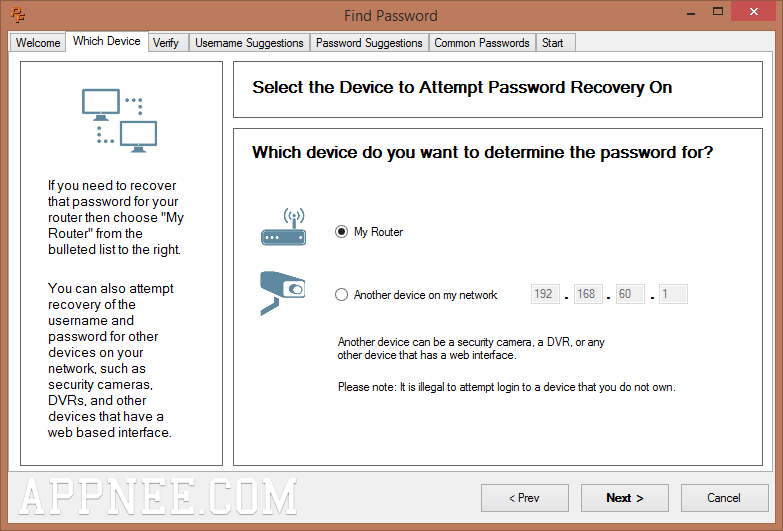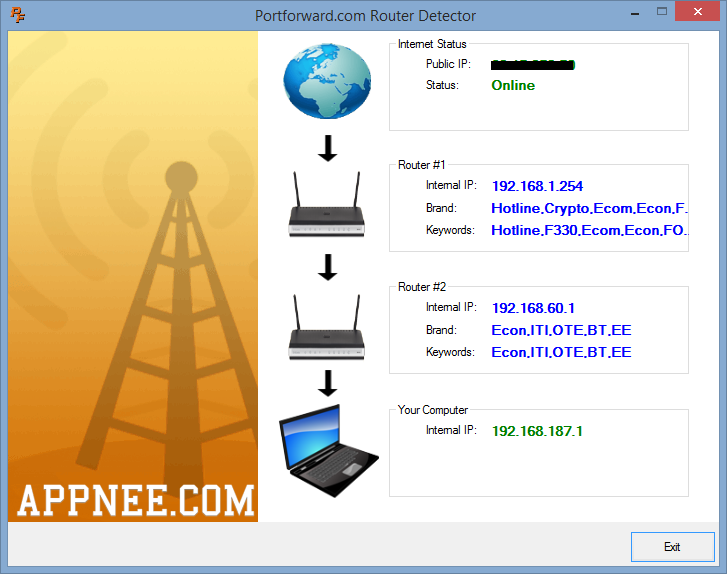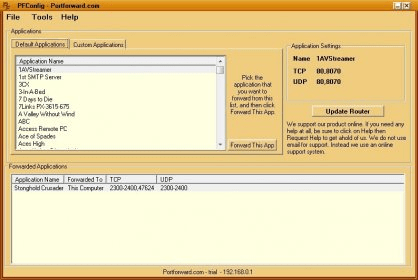

- FREE VERSION OF PORT FORWARD NETWORK UTILITIES REGISTRATION
- FREE VERSION OF PORT FORWARD NETWORK UTILITIES SOFTWARE
This is where an open port checker or open port scanner comes in. To close a port, you’ll first need to identify open ports that might be putting you at risk.

At a minimum, they can likely figure out which operating system is in use, which puts the server at risk. Certain services are an easy way for hackers to acquire key information.
FREE VERSION OF PORT FORWARD NETWORK UTILITIES SOFTWARE
Unused software is often overlooked and not updated, which makes them a major source of vulnerability.Ī hacker could also use an open port to access info on your network. These tend to be insecure and might even be using default passwords.Īn open port could give a hacker the opportunity to exploit past versions of software not currently in use. Unused services are likely to have default configurations. They could reconfigure the service to distribute content, for example. If a hacker identifies an open port, they could launch attacks. However, open ports should be restricted as much as possible, because certain ports can make your network vulnerable to hackers. You need them for users to connect to your services. Ports are, of course, crucial in many ways. Ports can be open or closed via the firewall. Similarly, a “closed” port is a gateway blocking specific traffic from coming in or going out of the local area network. So, an “open” port-whether outgoing or incoming-allows packets sharing the same port number to go in or out of your local area network. An alternate HTTP protocol port.Ī port is a number identifying a certain type of network traffic, as I’ve already explained.


Protocol at the application level, for accessing emails.
FREE VERSION OF PORT FORWARD NETWORK UTILITIES REGISTRATION
Protocol for obtaining registration of ownership details for IP addresses and domain names. 25: Simple Mail Transfer Protocol (SMTP).23: Telnet, or terminal network, for protocol implementation text interface across a network.21: File Transfer Protocol (FTP) control channel.20: File Transfer Protocol (FTP) data channel.Bear with me, because the list is hefty, but hopefully it will serve as a useful reference guide for you. These are the most commonly used ports, alongside their port numbers. Skip to Open Port Scanners and Checkers List > Commonly Used Ports Port numbers are set and correspond to the function for which each port is responsible. In this instance, ports would determine where the request goes, guiding a web server request through port 80 and an FTP server request through port 21. When the server gets an inbound request, the operating system has to decide whether to send the request to the FTP or web server. This is a normal and frequent combination. In practice, port use looks something like this: imagine a server is running an FTP server and a web server simultaneously. Ports are the solution to this issue, allowing multiple processes and activities to have access to a shared network interface. The issue with this is usually devices only have a single network interface. Your hardware is constantly managing multiple activities and tasks at once, and many of these will require network access. These gateways exist in the network and can be points of vulnerability. You might describe ports as gates into your hardware.


 0 kommentar(er)
0 kommentar(er)
